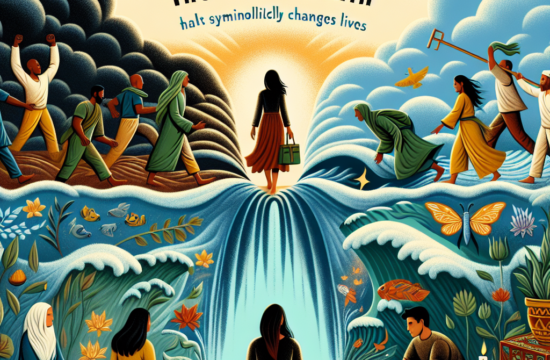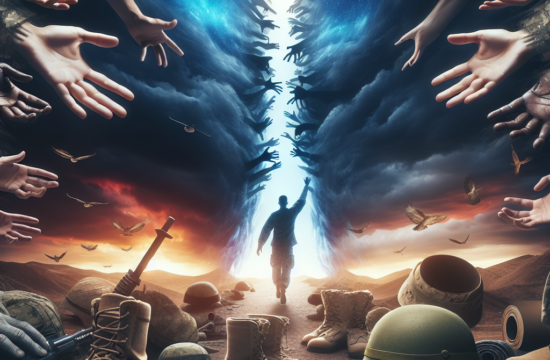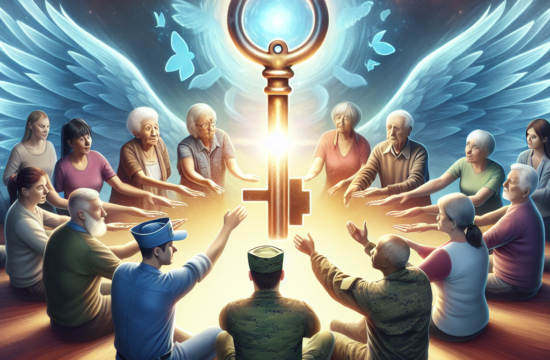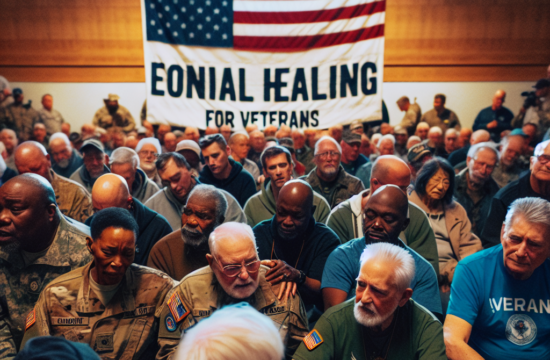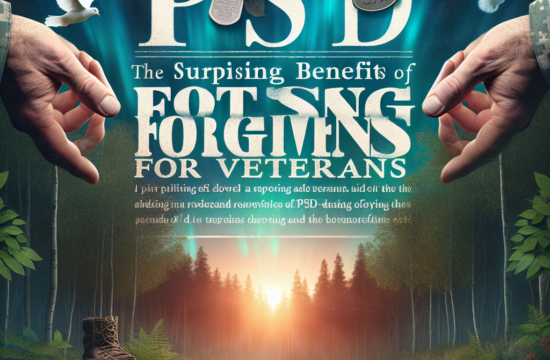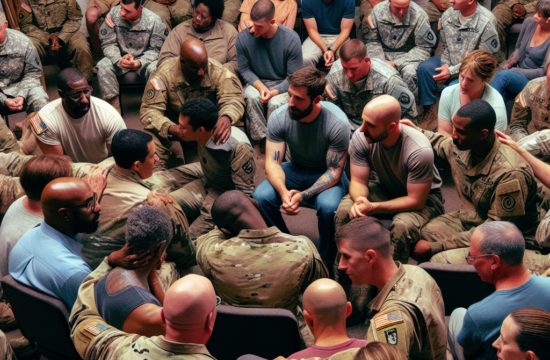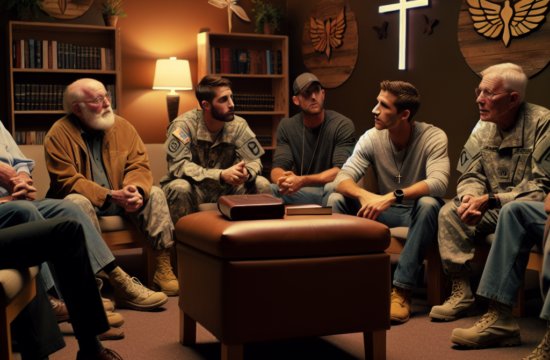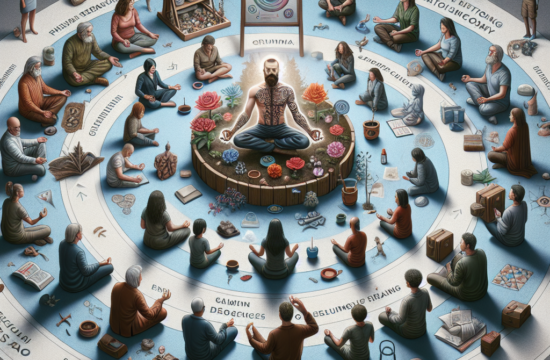==> Thank you for reading this post! Click Here If you are looking for support and Victory over PTSD.
Understanding Combat Fatigue
What Is Combat Fatigue?
When I first learned about combat fatigue, it struck me right in the gut. It’s not just about physical exhaustion; it’s a state of emotional and mental distress that many of our veterans face. They’ve been through experiences that many couldn’t even imagine, and it’s no wonder that the wear and tear on their minds and souls can be immense. Understanding this is crucial before diving into the healing process.
This fatigue can manifest in numerous ways, from anxiety and depression to feelings of numbness. It truly reshapes how a person interacts with the world around them. I’ve seen friends struggle with it, feeling lost and disconnected. It’s easy to feel stuck when you feel like you’re stuck in a loop of pain and confusion.
In my journey with understanding this concept, I discovered that it’s not a personal failing. Instead, it’s a battle many face after intense stress. Coming to terms with this can be the first step toward healing, allowing a person to acknowledge their struggles without shame.
Identifying Signs of Combat Fatigue
As I’ve navigated through conversations with veterans, identifying signs of combat fatigue has become an essential skill. It can often be subtle at first, but with experience, I noticed how certain behaviors change over time. Mood swings, isolation, or even an inability to concentrate can be telltale signs. These aspects aren’t always easy to recognize, especially for those who have been fighting these battles within themselves.
One critical thing I realized was the importance of communication. When those around someone suffering from combat fatigue can recognize the signs, it opens the door for friendship or support—both of which can be transformative. Relationships can start healing wounds that seem irreparable when you go through this journey alone.
By becoming aware of these signs, we can cultivate our ability to help others seek the support they need. It’s all about creating a safe space where veterans can feel free to share their experiences without fear of judgment.
The Importance of Seeking Help
One of the most significant lessons I’ve learned is that seeking help is not a sign of weakness—more so, it’s a path to strength. There’s a stigma around asking for assistance, particularly in military settings, but this kind of bravado can often exacerbate feelings of isolation and despair. Understanding that it’s okay to ask for help was a major breakthrough for me.
Thriving isn’t just about surviving; it’s about reclaiming life. When I finally reached out, it opened doors to support networks I didn’t even know existed. There are countless professionals who understand this journey intimately, providing tools and resources specifically designed to equip individuals for recovery.
In reaching out, you’re not only turning toward healing for yourself but also setting an example for others who may be struggling in silence. In sharing my own story, I found that others felt encouraged to speak their truth, creating a ripple effect of healing.
Christ’s Restoration in Healing
Finding Faith in Recovery
In my own journey, discovering that faith can play a huge role in the healing process has been eye-opening. When I embraced faith, even during my darkest days, I found a sense of hope that I hadn’t felt before. It’s like finding a lighthouse in a storm, helping to guide you back to safety.
Faith offers a compassionate perspective on life—it doesn’t take away the pain, but it provides an anchor when everything feels chaotic. It’s less about religious structures and more about connecting with a higher power that brings comfort and understanding as you heal.
Being open to this kind of restoration can change the game. I’ve seen veterans, friends, and even myself experience emotional shifts that align with their spiritual connections, helping them regain a sense of purpose and belonging.
The Role of Community and Support
Over time, I began to understand that part of Christ’s restoration is found within the community. Surrounding yourself with people who genuinely care can amplify the healing process. When I leaned into community support, it transformed how I perceived my struggles.
Finding a group of like-minded individuals was essential. It created a space where we could share our stories, triumphs, and challenges. I have personally felt the healing in our shared laughter and tears—it’s powerful. When we come together, we harness the strength to lift each other up, reminding one another that none of us are alone in this fight.
The power of support is rooted in compassion and understanding. Each person in the community plays an important role, creating a tapestry of strength that can uplift every individual. This was a practical realization for me—community does matter, and it can be a catalyst for incredible transformation.
Embracing Forgiveness
A major piece in the restoration puzzle is learning to forgive, not just others but, crucially, ourselves. For many, carrying guilt and resentment can feel like an anchor dragging them deeper into despair. In my experience, embracing forgiveness has provided a sense of relief that is hard to capture in words.
Forgiveness doesn’t trivialize the pain or the experiences but allows you to release the weight of those burdens. When I leaned into this concept, I discovered that letting go of the past opened up space for healing. It’s a process, not a one-time event, but each step has led to lightening my emotional load.
Get Support and Help with Recovery! Visit us for more Information and Support
I’ve experienced how forgiveness can transform relationships as well. It fosters deeper connections with others and builds a path toward stronger, more meaningful interactions. It’s an ongoing journey, but each deliberate step forward is one worth taking.
Finding Hope and Purpose
Rediscovering Identity
Another critical aspect of healing involves rediscovering who you are outside of your experiences with combat fatigue. I’ve found that many veterans grapple with their identities after service, often feeling lost or like they don’t recognize themselves. It’s a journey of self-exploration—who are we when stripped of our labels and past pain?
Engaging in new hobbies or interests can serve as fuel for this discovery. I found that by pushing myself to step out of my comfort zone, I was rediscovering passions I hadn’t explored in years. Whether it’s picking up a paintbrush, running, or volunteering, these pursuits breathe life back into your existence.
Being proactive about identity can intertwine with faith too, creating a fuller picture of who we aspire to be. Embracing this new identity can balance the scars of our past and help us envision a hopeful future.
Establishing Goals for a Brighter Future
After gaining a sense of identity, it became essential for me to establish reachable goals that aligned with my newfound perspective. It’s similar to building a roadmap to your healing—each step ought to be incremental and intentional. This approach has provided me with a motivating force that keeps moving forward.
I’ve learned that setting goals doesn’t mean you have to be perfect; it’s about progress over perfection. These goals can be big or small, from aiming to connect with others to pursuing educational opportunities. Each little win creates momentum, and honestly, it’s been a thrilling ride!
Sharing these aspirations with trusted friends has added tremendous value. Having accountability boosts motivation and fortifies relationships. Plus, we often celebrate each other’s successes, building an atmosphere of encouragement that nurtures growth.
Living Out Your Purpose
Ultimately, gratitude and spreading positivity while moving forward can ground our experiences in purpose. I’ve found that embracing gratitude actually sheds light on even the darkest struggles. Focusing on the blessings—however small—can anchor us in moments of despair. I remember reflecting on my journey and acknowledging that even through the pain, there have been moments of beauty.
Finding ways to serve others has also become a beautiful outlet. Whether it’s volunteering at a local shelter or simply checking in with a friend, giving back can significantly reshape our outlook. It creates a sense of belonging and purpose—an infusion of hope into the lives of others as well as ourselves.
Living out our purpose—those gut impulses that guide our actions—creates a legacy of strength and resilience that others can lean into. As I navigate this journey, I am grateful for every lesson learned and hope to encourage others to find their way through their own battles.
Conclusion
Ultimately, navigating combat fatigue and the path to restoration through Christ isn’t easy—it takes time, patience, and a sprinkle of courage. But the beauty in this industry is that you’re never alone. Whether through faith, community, or finding purpose, healing is not only possible; it’s truly life-changing. My journey is ongoing, and I cherish that I get to share these lessons. Together, we can confront our battles and embrace the potential of a bright future.
Frequently Asked Questions
1. What is combat fatigue?
Combat fatigue is a psychological condition that veterans may experience, characterized by mental and emotional exhaustion due to prolonged combat exposure. It includes anxiety, depression, and feelings of helplessness.
2. Why is seeking help important?
Seeking help is crucial because it allows individuals to address their struggles head-on. It promotes healing and shows that asking for support is a strength, not a weakness.
3. How can faith play a role in healing?
Faith can provide hope and an anchor during tumultuous times. Embracing faith can lead to emotional healing and a renewed sense of purpose through connection to a higher power.
4. What role does community support have in recovery?
Community support fosters connection and understanding, creating an environment where individuals feel safe to share their experiences and seek healing together. It amplifies the healing process significantly.
5. How do I begin to rediscover my identity after combat fatigue?
Rediscovering identity involves exploring new interests and abilities. Engaging in activities and connecting with others can help rebuild your sense of self outside of your past experiences.




